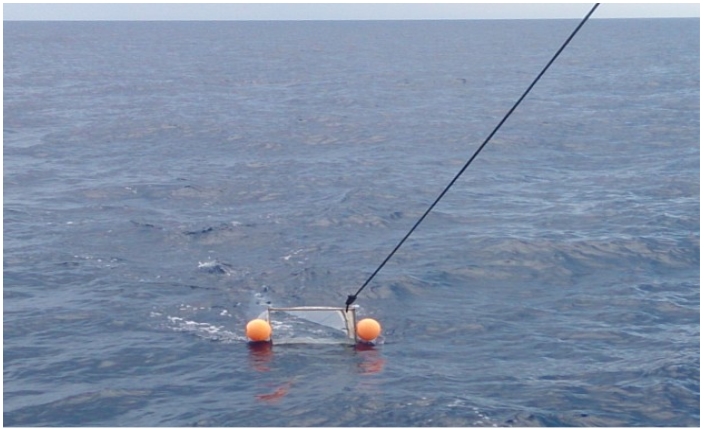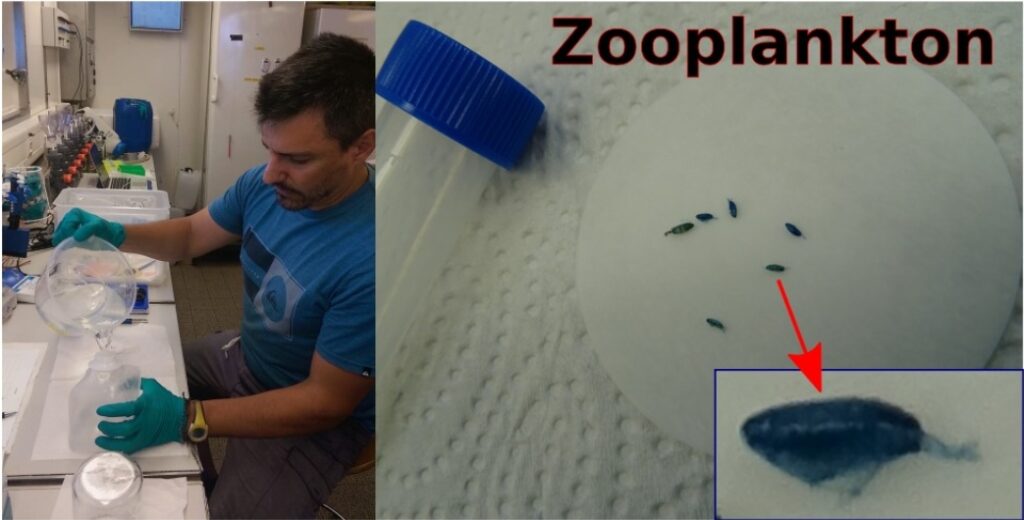An article from Dr. Rodrigo Gonçalves
Besides working with the mesocosmos, we also had experiments onboard. And besides studying phytoplankton, we also worked with zooplankton (animals in the plankton). Zooplankton is very important in aquatic ecosystems as they ‘transfer’ energy from phytoplankton to fish and other animals (including whales!). Within zooplankton, copepdos is the most numerous group (in fact they compete with insects for the ‘most abundant multicellular organism in Earth’). We have been collecting microscopic life from surface waters using a “manta” net. This net (also called neuston net) is towed by Poseidon and thanks to its side buoys it doesn’t sink, rather it skims the surface of the sea trapping all particles in the upper centimeters of the water column. We found a rich community of organisms and particle including, unfortunately, many plastic debris.

This time we were looking for a special kind of surface dwelling organism: it’s a group of copepods (belonging to zooplankton) which is very conspicuous due to its intense blue color. Inspired by previous work from Rahlff et al. (2018) (former team member in Dr. Wurl team) we did some experimental incubations onboard to investigate if this little creatures help enriching the surface layer and if they use their pigments as ‘sunscreens’ against solar radiation. The incubation was led by our colleague Dr. Rodrigo Gonçalves from CESIMAR-CONICET (Argentina) who picked the animals one by one, at times struggling to be quick before they jump to escape (even out of the jar!).

It was a lot of work in just a few hours. Each team member had a task and we worked in good coordination so in the end the experiment was successfully finished and everyone got a well deserved, relaxing rest of the evening!! Below a video showing the work in the Poseidon’s lab.